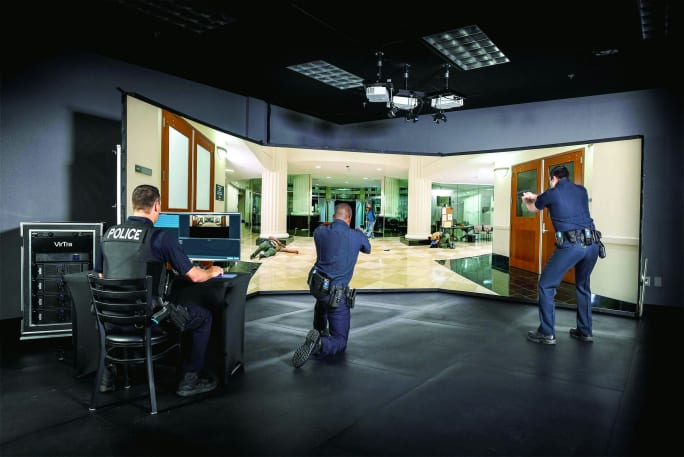Law enforcement training simulators have evolved in the last decade to feature multiple screens for a more immersive experience, 4K HD video for more visual realism, and a variety of sophisticated firearm replicas that feel like and even behave like real guns. This has given agencies that use these tools an opportunity for very high-end training. But leading subject matter experts at some of the nation's largest makers of computer-based training simulators say the component that is critical to achieving real value from their products is not the machine, it's the person running the training.
Experts say that far too often they still see examples of agencies that are using their sims to evaluate their officers' performance rather than train them. Robert McCue, general manager of MILO Range Training Systems, says the reason that so many agencies haven't changed their mindset about simulator training is they don't understand the power of the latest systems. "Older simulators used to just test your ability to do certain tasks. These can actually teach you how to do certain things properly," he explains. And he is quick to add that the key to achieving that training value is a qualified instructor who knows how to get the most out of the training. "You can have a not so good simulator system and a great instructor and get a lot more out of the training than if you have a great system and a poor instructor," he says.




![[|CREDIT|]](https://assets.bobitstudios.com/image/upload/f_auto,q_auto,dpr_auto,c_limit,w_684/pm.meggitt-100le-2-237-coach-1260x560_1759886576582_tzgrxt.jpg)









